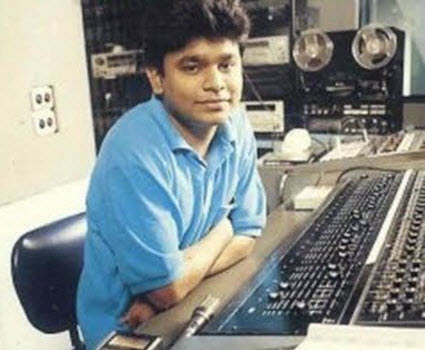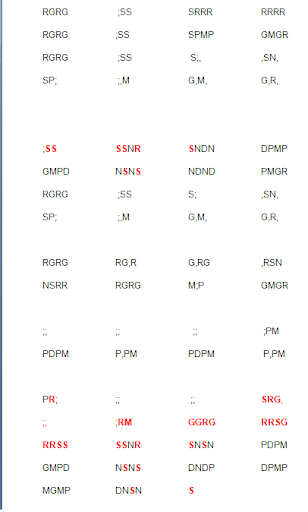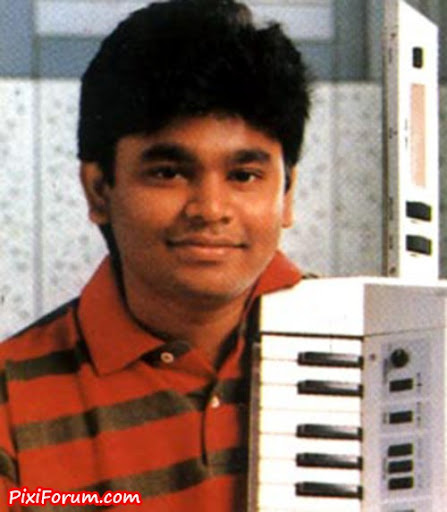Compiled another set of Classical based compositions of Rahman Ji. This time I have tried to list some of the Hindi compositions too.

Bilahari– Omana penne from the movie “Vinnai Thaandi Varuvaaya” is based on the Raga Bilahari. The most beautiful part of the song is the interlude “Maragatha thottilil” which brings out the Rasa of Bilahari.
Nattai – The song Narumugaye from the movie Iruvar is based on Naattai. However usage of Gambeera naattai is seen in the pallavi for the female portion of the song. Also the ending of the charanam “Ilaithaen Thudithaen Pørukkavillai..
Idaiyinil Maegalai Irukkavillai..” is in the Raga “Maand”.
Maand – Sowkiyama in Sangamam is purely based on the Raga Maand. The most beautiful portion in the song is the starting of charanam, when nithyasree sings “Suriyan Vandhu Vaavenum bodhu” and the briha following it brings the main saaram of the Raga. The saz piece in the end is also wonderful.
Kaapi or Mishra pilu – The song oru poiyavadhu from the movie Jodi, is based on the ragam kapi. pilu is a hindustani raag that is almost similar to kapi in carnatic. However in the charnam the lines “aanaal penne ullam kallil seithuvaithaano….kaathal kanne ullam kallil seithuvaithaano” is deviating from kapi and is set in “Dharbari”.
Saraswathi and Hameer kalyani – Kaiyil midhakkum from Ratchagan is based on the Ragas Saraswati and Hameer kalyani. The Ragas were switched alternatively in elegance to produce a great tune. “Kanava kaatra” starts with saraswati. However the line “unnai mattum sumandhu nadanthaal uyaram dhooram theriyaadhu” in the charanam perfectly brings out the essence of Hameer kalyani. The song “Malargale malargale” from the movie Love Birds is also based on “Hameer Kalyani”
Charukesi – The song “Aahistha Aahistha” from the movie Swades is based on the Raga Charukesi. The tamil equivalent “Thai sonna thaalattu” is sung by Jesudas and Madhusri.
Panthuvarali – Hay Rama from Rangeela sung by Swarnalatha and Hari ji is based on Panthuvarali. Also the song “Machiniye” from the movie star is based on panthuvarali or kama vardhini.
Bhimplas – Manmohiney Morey from the movie “Yuvraaj” is based on Bhimplas.
Hamsadhwani/Shankarabhranam – yeh jo des hai tera from “Swades” is mainly based on Shankarabharanam. However, the song uses lot of phrases of Hamsadhwani. The pallavi starts with notation “yeh jo des hai tera …..[P N S S S S]”, ” tujhe hai pukaara …[P S R..S R G]”. In the charanam, “Tujhse zindagi ….[R G gp G G G] hai ye keh rahi….[R G gd P P P]” usage of Da is seen.
Shubha panthuvarali or Gujri Todi – Bhor Bhaye song from Delhi 6 is based on Shubha panthuvarali. The hindustani Equivalent of this raga is Gujri Todi.
Hamsadhwani and Vaasanthi – Manmadha maasam song from Paarthale paravasam, starts with Hamsadhwani and as the song progresses, it moves to vaasanthi, which is evident by the usage of the Sudha Daivatham.
shankarabharanam, behaag and hameer kalyani – Nee thaan en Desiya geetham from the movie Paarthale paravasam is an excellent composition and it is a magic to hear in Balram’s voice. Wow what a composition! The song starts in Shankarabharanam. After the interlude but before starting of the charanam, Balram does a Aalap which is set in Hameer kalyani. As the song moves to charanam, the Raga shifts to Behag.
Ragamalika – Suttum Vizhi chudar thaan from the movie Kandukonden kandukonden is a ragamalika. The sequence is Behag, kalyani, Vasantha and back to Behag.
To be continued…
continue your reading here:
https://ravikumarv.wordpress.com/2011/02/12/a-classical-perspective-of/






Recent Comments